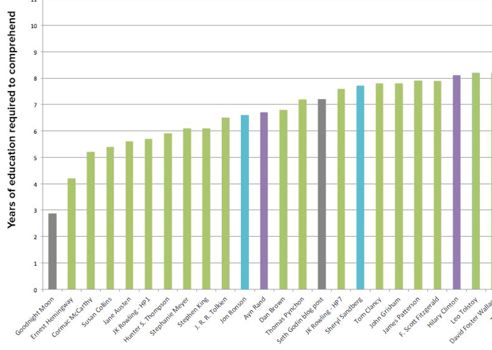Reading time: Less than 1 minute
This is my weekly installment of “writing about writing,” in which I scan the world to find websites, books and articles to help other writers. Today I discuss a blog post about readability statistics…
I’m usually amused when people first learn about readability statistics. Their common reactions are:
- Shock: “Isn’t it far better to write for a university–educated audience?”
- Outrage: “Why would anyone aspire to write for a grade 6 level?”
- Pity: “You poor suckers who have to run your text through some lame software. I’m a smarter person because I already know how to write.”
(If this is all news to you, readability statistics suggest that writers should aim to write at what’s called a grade 9 level or lower.)
Shane Snow, author of the book Smartcuts and chief creative officer for Contently, recently discovered readability stats and had the good grace not to be entirely scornful about it in a LinkedIn post headlined, “How much does “reading level” matter?”
But he fell into the trap of taking the grade level moniker literally. This is a mistake. Writers should not imagine a group of grade sixers (albeit ones who wear suits and can drive cars) eating up their words. Instead, they should regard the readability number as arbitrary. Aim for 6 — because that’s the number you want — and steer clear of 10 or higher. No need to imagine readers in short pants.
I appreciate the work Shane did, running a bunch of text through the software, but I’m gobsmacked that he found so much good writing. In one of his many charts, an academic paper about chess earns a grade 12.5 level. I don’t think I’ve ever seen an academic paper scoring less than a 14. And I’ve edited plenty of papers (mainly from engineers) that were grade 23 or above.
In any case, if you use readability stats — and I think you should — you can get them in MS Word and from sites such as the Hemingway App. But I prefer to use ProWritingAid. I’ve written about readability stats, previously.
Thanks to my friend Peter Wilson who kindly forwarded the Shane Snow post to me.
An earlier version of this post first appeared on my blog on Feb 5/18.


